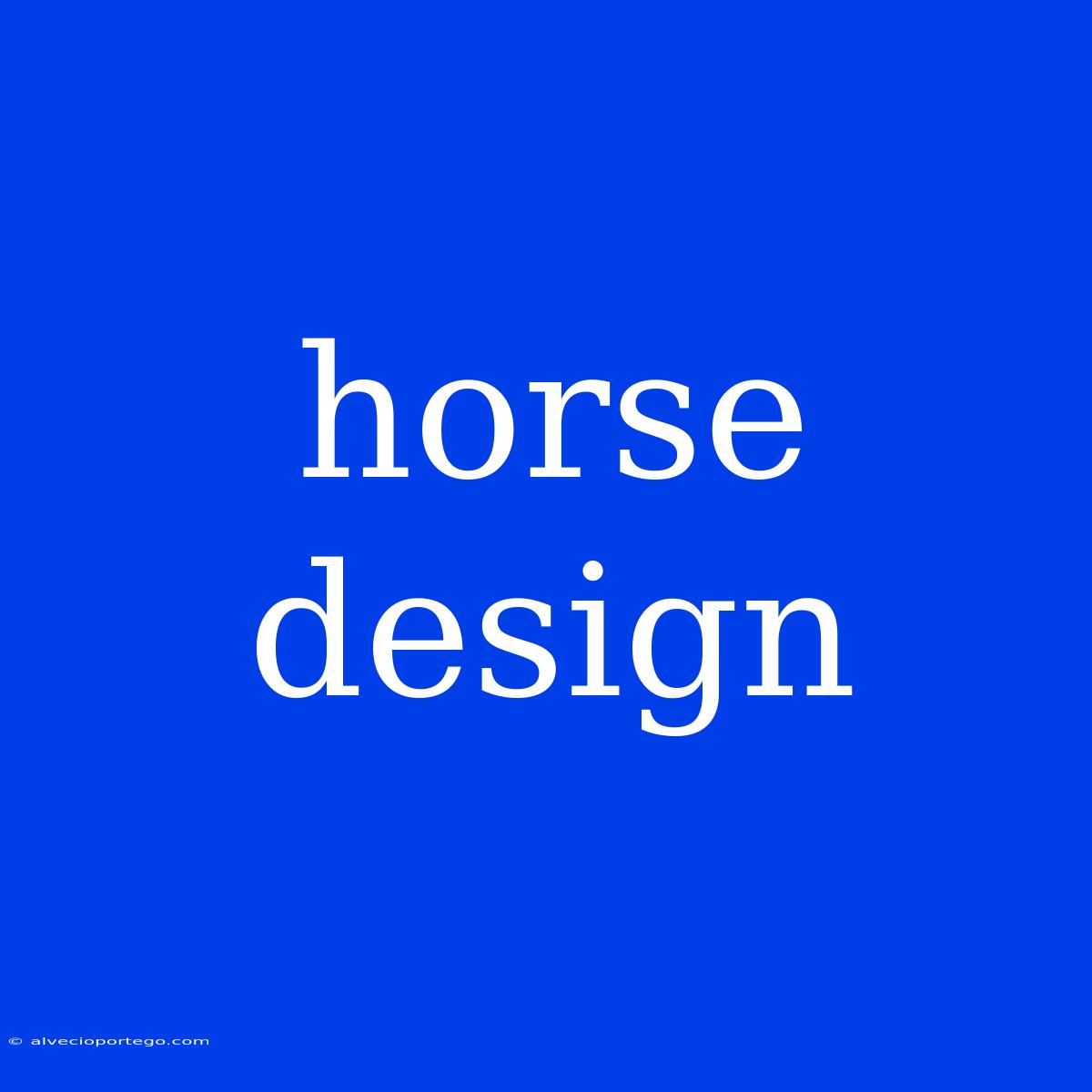Horse Design: A Look at the Art of Equine Representation
The horse, a majestic and powerful animal, has been a constant source of inspiration for artists and designers throughout history. From ancient cave paintings to modern sculptures, the horse's grace, strength, and spirit have been immortalized in countless forms of art.
A Rich History of Equine Design
Ancient Representations:
- Cave Paintings: Some of the earliest representations of horses can be found in cave paintings, such as those in the Lascaux caves in France, dating back to the Paleolithic period. These paintings often depict horses in a realistic and dynamic manner, capturing their movement and anatomy.
Medieval and Renaissance:
- Tapestries and Paintings: During the medieval and Renaissance periods, horses were frequently depicted in tapestries, paintings, and sculptures. These works often portrayed horses as symbols of power, nobility, and chivalry, reflecting the importance of horses in medieval society.
Modern Design:
- Branding and Logo Design: The horse's image has been widely adopted in branding and logo design, often representing attributes like speed, strength, and freedom.
- Graphic Design: Horses are a popular subject in graphic design, appearing in illustrations, posters, and other visual materials.
- Product Design: Horses are also featured in various product designs, such as furniture, fashion accessories, and home decor.
Elements of Horse Design
Anatomy: A strong understanding of horse anatomy is crucial for creating accurate and realistic representations. This includes understanding the horse's skeletal structure, musculature, and proportions.
Movement: Capturing the horse's dynamic movement is key to creating engaging and lifelike designs. This can be achieved through various techniques, such as using lines to suggest motion, or depicting the horse in a specific pose that emphasizes its gait.
Style: The style of horse design can range from realistic to abstract, depending on the artist's vision and the desired effect. Some designers use a stylized approach to emphasize certain features, while others aim for a more photorealistic representation.
Beyond the Horse: Exploring Themes and Concepts
- Horse Spirit: Horses are often associated with freedom, wildness, and a connection to nature. Designers can explore these themes through their work, using the horse as a symbol of these concepts.
- Cultural Significance: Different cultures have different perceptions and interpretations of the horse. Designers can incorporate these cultural nuances into their work, creating pieces that resonate with specific audiences.
- Mythology and Folklore: Horses play a significant role in mythology and folklore worldwide. Designers can draw inspiration from these stories, creating designs that embody the magical and symbolic qualities of the horse.
The Future of Horse Design
The horse continues to be a timeless source of inspiration for designers. As technology and artistic techniques evolve, we can expect to see new and innovative approaches to horse design. Whether through 3D modeling, digital art, or other emerging technologies, the horse's beauty and power will continue to captivate audiences for generations to come.

